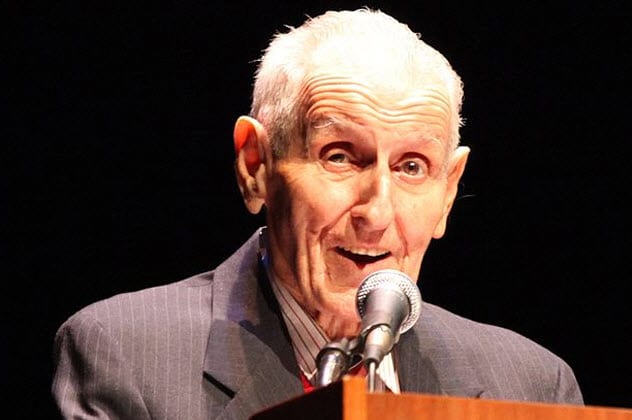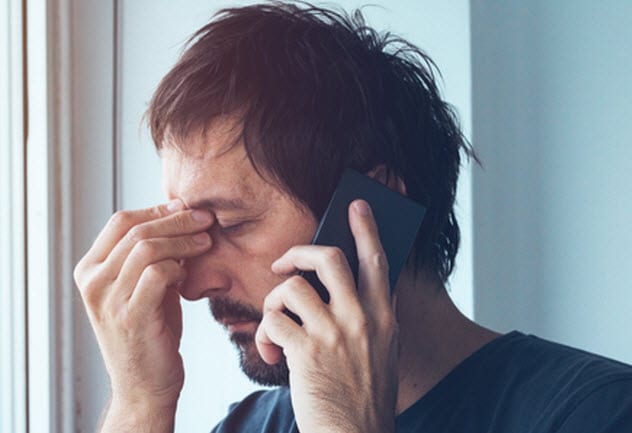What Are the Chances That a Suicide Survivor Will Try Again
Suicide is a tragic event besides as a subject of intense, often heated debate when information technology comes to a person'due south right to accept his own life. The German philosopher Arthur Schopenhauer in one case said about suicide, "They tell us that suicide is the greatest piece of cowardice . . . that suicide is wrong; when it is quite obvious that there is nothing in the world to which every man has a more unassailable championship than to his ain life and person."
Suicide is a grim subject that touches many lives and leaves much grief in its wake. Simply most suicides are not a success, especially depending on the method employed. In fact, the number of successes is strikingly low.
Information technology is estimated that there are 25 legitimate suicide attempts for every 1 person who succeeds in ending his life. The survivors can give united states keen insight when it comes to suicide and maybe assist us to become more equipped to deal with this trouble which claims all likewise many lives.
10 Youth Suicide

When it comes to failed suicides, teenagers have the absolute lowest rate of success. Tragically, this often leaves the victims with both physical and emotional scars which last a lifetime.[1]
The suicide success charge per unit for young people aged 15–24 is extremely depression. Only 1 out of every 100 or 200 volition actually dice. The rest will live with the scars of their attempts for the rest of their lives.
Fifty-fifty so, suicide is the second leading crusade of expiry in people ages 10–24. Younger people are but healthier and thus less likely to dice of natural causes. This boosts the ranking of suicide as a cause of decease for the young.
nine Suicidal Intent

Suicidal intent is a rather difficult thing to pin down. Peculiarly in a time when self-harm is becoming more prevalent, professionals are tasked with the wearisome challenge of teasing out bodily suicide attempts from self-damage as a weep for help.
Oft, people who inflict harm on themselves accept zero interest in true suicide. Rather, these people encounter cocky-harm every bit a way to deal with overwhelming emotions. It's near a coercion.
But those who have attempted suicide and survived have reported on their desire to really die, and the results are quite striking. Researchers in Oxford in the United Kingdom asked 864 survivors to charge per unit on a scale of 1 to 30 how much they wanted to die when they attempted suicide.
Of the respondents, 36.9 percent roughshod into the "low" want to die category (rated 0–6), 33.9 percent were in the "moderate" range (rated 7–12), 25.0 percent had a "high" intent to die (rated 13–20), and four.2 percent were in the "very high" category (rated 21–30).
This tells united states of america that many people who attempt—or fifty-fifty commit—suicide are ambivalent nigh it. They're unsure, and they're pain. Only a few are quite committed to taking their ain lives.[2]
What could the implications of this information be for suicide prevention? Perchance further research will help us to reduce the suicide rate over time.
8 Reasons

One reason why people attempt or commit suicide is clinical depression. Every year, 44,965 people commit suicide in the United States lone, and people with clinical depression make up a big number of these victims.
However, contrary to the media narrative that depression is the sole crusade of suicide, there are other reasons why people choose to end their lives.[3] For case, some are suffering from the horrible afflictions of psychosis and other severe mental illnesses, which cause those enduring these diseases to simply want to silence the delusions.
For other individuals, the trouble is impulsivity. They accept an extremely low tolerance for life's pressures and problems, which can exist dangerous when combined with a streak of impulsivity and a want for the pain to terminate.
If we wish to tackle the problem of suicide, a multifaceted arroyo will be necessary as the trouble is complex and has no easy answers.
7 Philosophical Suicide

Sometimes, suicide isn't even the act of a person trying to stop his pain. Philosophical suicide occurs when someone has fabricated a choice to end his life at a certain time. Knowing the inevitability of death is approaching (often due to a terminal illness), these people make a choice to dice by their own mitt on their terms rather than waiting for death.
French philosopher Albert Camus is famously quoted equally maxim, "Should I kill myself, or have a cup of coffee?" This is a clear instance of someone playing with the idea of philosophical suicide.[4]
While Camus ultimately argued confronting philosophical suicide past suggesting that we find our ain significant in life and relish the beautiful experience of the artful, the question has nihilistic overtones. What should one do with a life without meaning?
Dissimilar the other reasons, philosophical nihilism is often a cold, calculated, well-thought-out choice using reason rather than panic, fright, misery, unhappiness, or any other sort of personal discomfort. This implies that suicide is a sensible, personal, individual choice for some people and perhaps that should exist their right.
six Assisted Suicide

Similar to philosophical suicide is assisted suicide, which was probably made most famous by Dr. Jack Kevorkian in the 1990s. In assisted suicide, someone wishes to end his pain—normally extreme physical pain that we healthy people cannot even begin to imagine—with the medical supervision and assistance of a physician.
The legality of this varies from region to region. But many places take legalized assisted suicide for the suffering and terminally sick, including Kingdom of belgium, holland, Switzerland, and Luxembourg. In the United states of america, md-assisted suicide for terminally ill patients is legal in California, Colorado, Hawaii, Montana, Oregon, Vermont, Washington, and Washington DC.
This practice raises some serious ethical questions pertaining to how we value our lives. Is a life of abiding pain worth living?
In 1993, Kevorkian was treating a os cancer patient for whom morphine and other painkillers were no longer effective. In an interview, Kevorkian described bone cancer as the deepest, virtually disturbing toothache you've ever had in every single bone of your body every minute of every day. Is that a life worth living?[5]
5 The Elderly

The elderly are at a particularly loftier adventure for suicide. Contributing factors are the decline in wellness associated with aging and the loss of control over their ain bodily wellness. Another issue is financial instability, which tin can lead to a sense of hopelessness that some elderly people tin can't overcome.
Not but are the elderly more vulnerable to suicide, just they are besides more successful when they do try. Every bit nosotros discussed, young people aged 15–24 succeed in ane of every 100–200 suicide attempts, or 1 percent at well-nigh. For the elderly, the suicide success rate is one of every iv attempts, or 25 percent.[6]
When former people are ready to die, they're firmly committed in their decision and have usually contemplated it for a long time. In add-on, they've lost meaning in their lives.
The implications are obvious. If nosotros are to address the issue of elderly suicide, we need to sympathize the ageism of our cultures and observe solutions to the problems of elderly isolation and financial instability. At the very to the lowest degree, we need to brand the hard process of crumbling and its effects on the body easier on those going through it.
4 Males

Of all the people in the globe who choose to take their own lives, 79 percent are men. This makes suicide a particularly male phenomenon even though women accept higher rates of mental health problems. Men are mostly at gamble between the ages of 20 and 24.
Booze is a contributing gene. Well-nigh men who commit suicide had drunkard booze in the hours prior to their deaths. Men likewise have higher rates of alcoholism, which may serve to lower inhibitions enough to make them capable of taking their ain lives. This as well suggests that men turn to alcohol more frequently than women as an outlet for their problems.[7]
Another reason for the massively higher rate of male suicide is method. Men by and large cull to accept their own lives by firearm or hanging, which are ii of the virtually successful methods. Women are more probable to opt for poison or overdose.
iii Unsuccessful Suicide

When someone attempts suicide, the odds are extremely practiced that he won't die. On a global level, your chances of attempting suicide and actually succeeding are only 1 in 20. In the United States, you actually have worse odds. The success charge per unit is 1 of every 33 attempts, which means the 32 who failed are left with physical and emotional scars and ofttimes deformities that will last a lifetime.[8]
So, if an private thinks he is going to just commit suicide, the odds are stacked highly confronting him well-nigh regardless of method. Just hanging, drowning, and suicide past firearm accept a success rate above fifty percent. Other methods are successful less than 10 pct of the time.
two Confusion

Most suicide survivors find themselves absolutely dislocated as to why they even attempted to end their lives in the first place. As discussed earlier, very few are intent on actually dying. Many just don't want to alive, equally if they're wishing they could exist in a void where all the pains and problems of life don't exist.
This is a very important stardom. It'due south not that they want to die. They just don't want to alive. In a way, they are looking for some state in between life and death. Often, suicide survivors have no caption for why they tried to take their own lives.[9]
1 Regret

The scars of attempted suicide often final a lifetime in the survivors, and regret is one of the biggest parts of the equation. Survivors often suffer severe emotional trauma for years, including guilt, shame, anger, and depression.
Fortunately, there are a slew of resources out at that place—from websites to suicide survivor hotlines where people experiencing the trauma of coping can reach out and talk to someone. In the US, the National Suicide Prevention Lifeline also takes calls from survivors to help them through the hurting of their regret about their attempts to take their own lives.
If You lot Demand Assistance: If you or a loved i needs to talk to someone due to suicidal thoughts or actions, there are resources dedicated to helping you:
• United States National Suicide Prevention Lifeline: i-800-273-8255
• Canada Suicide Prevention Service: 1-833-456-4566
• United kingdom Samaritans Helpline: 116 123
Other countries' suicide prevention numbers are available here.[ten]
I like night stuff, horror, history, and philosophy. I also similar to write about them.
Source: https://listverse.com/2018/11/01/10-facts-about-suicide-and-their-implications/
0 Response to "What Are the Chances That a Suicide Survivor Will Try Again"
Post a Comment